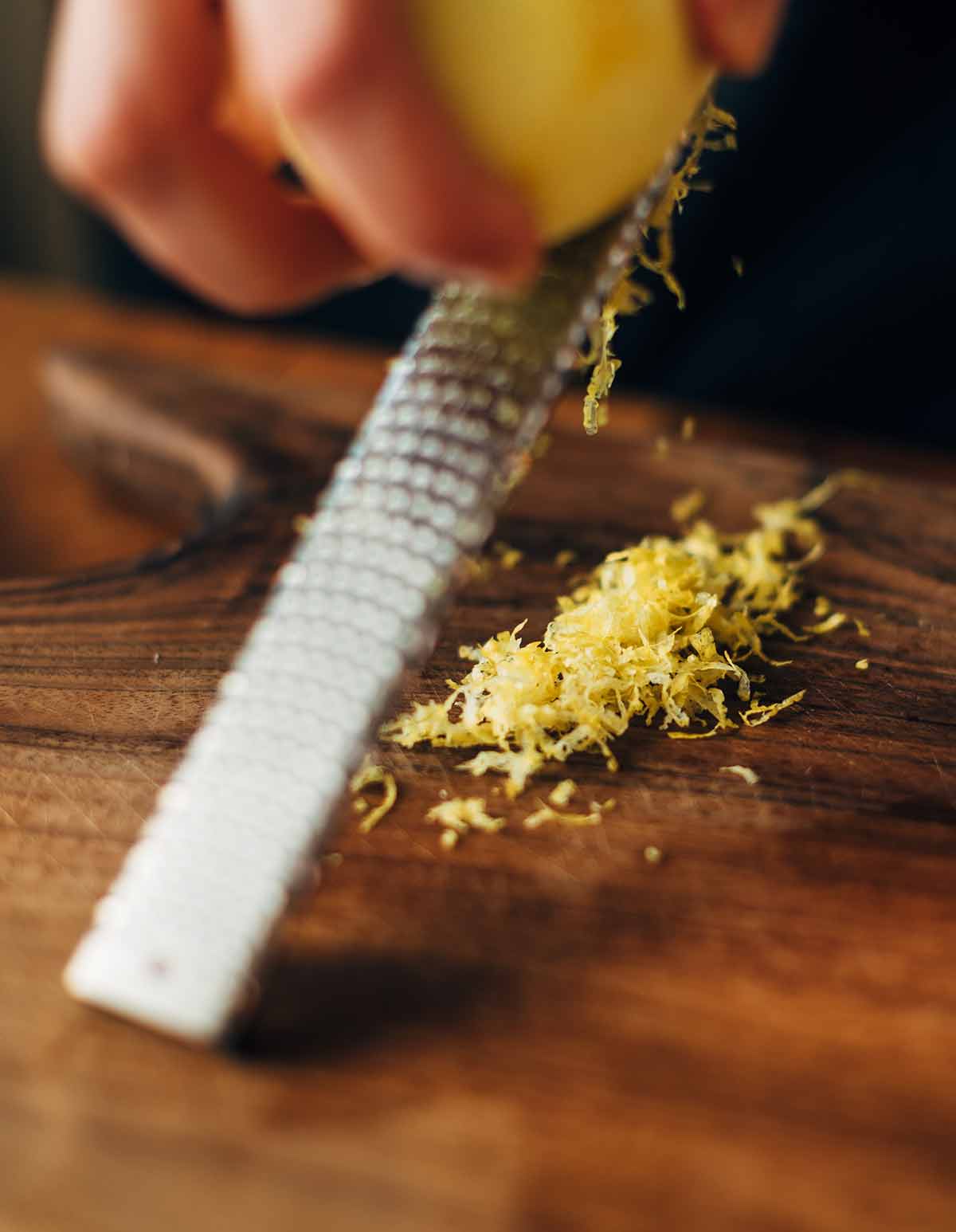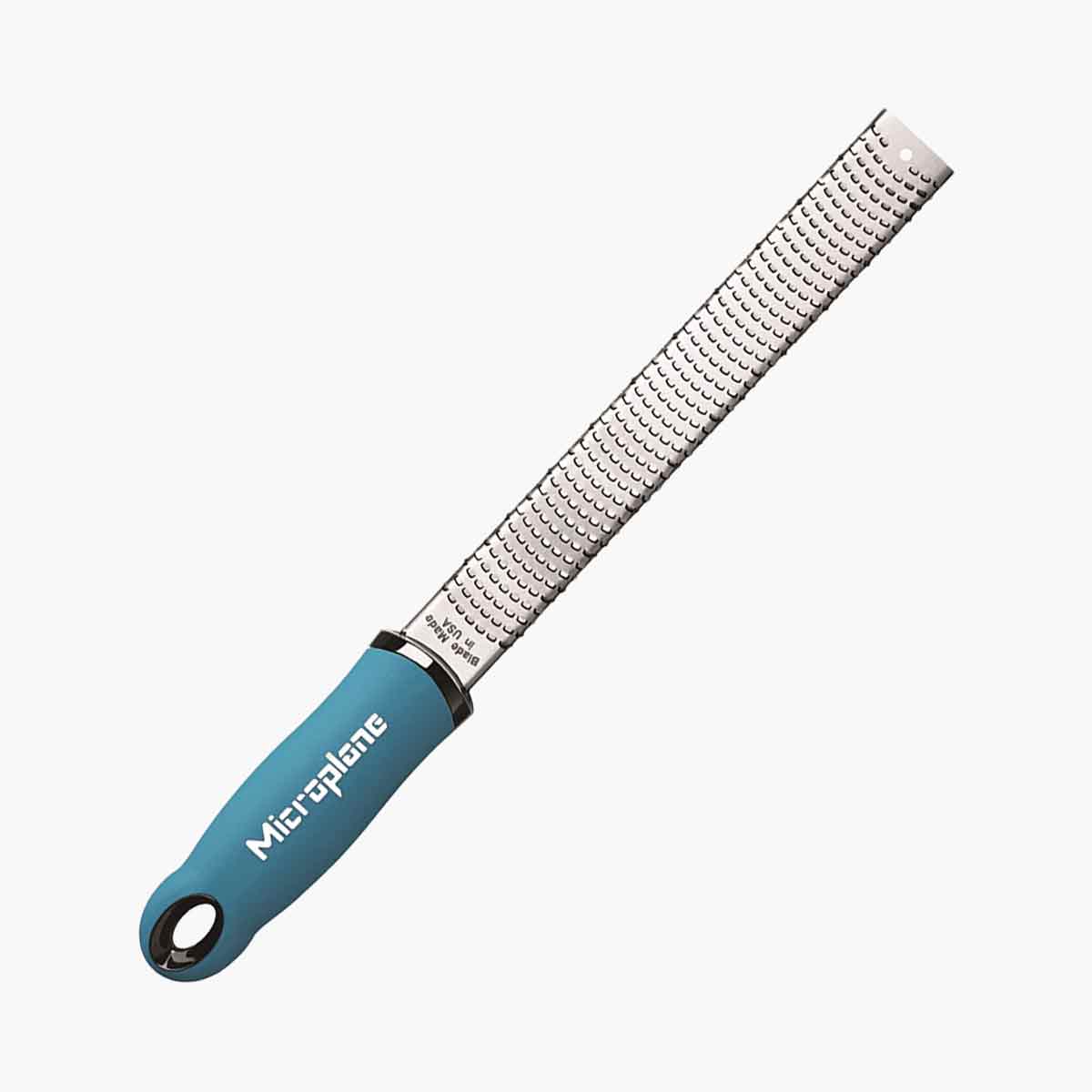
The Wrong Way to Zest Fruit
Just about every baker on the show has held their zester with the teeth facing up (as in the image above). That means they had to zest–one, two, three times—then pick up the fruit to examine what they’d just done and then they turned the fruit over, repositioned it, and zested again. What is wrong with these people?! I shout at my iPad.
To zest fruit the right way [there’s that judge-y word again], turn the zester so the bow or channel is facing up. Now, with your other hand, grab your lemon, lime, orange, or grapefruit—preferably organic, mind you, to avoid all those contaminants that just don’t belong in a body—and zest away. The bow or channel will collect the grated zest in lofty mounds, and you can easily see what you’re doing and can turn the fruit with nary a pause. The best thing is you can zest the whole fruit in one go. (A blessing during lemon curd season.)
My Favorite Citrus Zester


Microplane Classic Zester Grater, $32 on Amazon.com
When the Microplane came out in 1990, I laughed. It reminded me of my dad’s old carpentry rasps. A few years later, I bought one. What the hell? I thought. At the very least I could use it to file off the calloused skin on the bottom of my heels. BTW, don’t ever do that–um, so says a friend of mine. [Editor’s Note: Microplane does make a foot file. Just use a light touch.)
What Else Can You Use a Zester For?
I was blown away at how much better it worked than my old box grater. I could whiz through a whole bag of Costco lemons in a snap. In time, I realized it was also perfect for hard cheese, spices, garlic, fresh ginger. horseradish, chocolate, truffles, etc. I love it so much, we have two–one for citrus and one for everything else.
How to Keep a Zester Sharp
All good zesters come with a protective cover. Keeping your zester sheathed when not in use is the best way to keep it sharp. Thin zesters, such as the Microplane, are easily dented, so make sure to wash it by hand as a cycle through the dishwasher exposes it to possible dings from nearby items. And, just like your teeth, these sometimes need brushing. I use a regular stiff-bristled toothbrush that I keep tucked away in my baking drawer to make sure my zester has a dazzling smile.










I have always thought this was the smarter way, makes so much more sense! Thank you.
You bet, Tina!
I learned how to zest citrus from Iron Chef Michael Simon on the TV show “The Chew.” It’s a little tricky at first, but it becomes easy pretty fast here`s how. Hold it zester-teeth down, then holding the citrus near the handle, roll it towards the other end as you move fruit down the zester and rotate as you go. This naturally allows one to see if any is left behind and creates nice long strands, there’s probably a video of him doing this technique out there.
low and slow, I’m not sure I get it. I’ll have to go looking for the video.
Carla Hall demonstrates Simon’s technique.
Thanks, low and slow.
I am not doubting that your method might work, however, I have tried to zest a lemon this way and found it NOT to be as beneficial. One reason is bc if the fruit is being zested from the bottom, you cannot see if you are zesting too much and might get the pith (white area that’s a no-no). I can manipulate the lemon easier, and the zest falls on my parchment sheet if zesting from the top and not the bottom. Thanks for sharing your tip, but I will stick with what works for me.
GrammaSue, I think you and I zest the same. A video’s coming this week, then you can tell me if you’re on the same page!